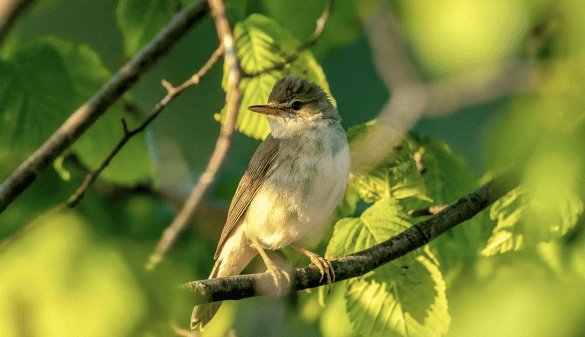Marsh Warblers are thriving in German cannabis fields — raising hope for the species’ future in an era of agricultural change.
A quiet conservation surprise is unfolding in the fields of Lower Saxony, Germany — and it’s coming from an unlikely place: a commercial hemp farm. In June 2024, ornithologists recorded an unusually high number of Marsh Warblers (Acrocephalus palustris) using these cannabis crops as a breeding habitat.
According to a breeding bird survey at Neurhede, researchers found 26 singing males in just 27.5 hectares of hemp — translating to a striking density of nearly 8 birds per 10 hectares. In stark contrast, the rest of the 669-hectare study area, which included the species’ more traditional wetland habitats, supported only three singing males.
A Green Refuge in Changing Landscapes
Typically associated with lush, damp vegetation near water — such as nettle patches, meadowsweet beds, and willowherb clusters — Marsh Warblers have been in decline in several parts of Europe. The species is still listed as “Least Concern” globally by the IUCN, but that label hides significant regional losses. Germany, for example, saw a 40% drop in numbers in Lower Saxony and Bremen over the last two decades.
The latest observations, however, suggest that industrial hemp (Cannabis sativa) could serve as a valuable alternative habitat. With tall, dense stems and abundant insect life, hemp fields appear to mimic many features of the birds’ natural breeding grounds — offering shelter and sustenance in equal measure.
Additional observations in July 2024 across three other hemp fields confirmed the trend: four more males were spotted singing from tall stalks, some as deep as 74 meters into the fields. Researchers believe nesting occurred in at least six cases.
Not Just a Fluke
This isn’t the first time Marsh Warblers have been found favouring hemp. As far back as 1819, Swiss naturalist Heinrich Rudolf Schinz noted their fondness for the plant. And in the late 1990s, researchers in Saxony-Anhalt documented similar behaviour, with up to 12 males occupying experimental hemp plots.
But today’s findings come at a critical time. Intensified farming, reduced fallow land, and widespread herbicide use have degraded many of the warbler’s former habitats. If hemp proves to be a consistently suitable breeding site, it could provide a lifeline for the species — particularly in Western and Central Europe.
From Stigma to Sanctuary
Once banned or heavily restricted, hemp cultivation has made a comeback in Europe. Beyond its controversial association with marijuana, industrial hemp has found renewed popularity due to its high-protein seeds, nutritious oils, and environmentally friendly fibre uses — including textiles and insulation.
Now, it may also prove to be an unexpected player in avian conservation. With the right support, the plant could become part of a broader ecological solution, turning cannabis fields into biodiversity strongholds in the heart of Europe’s farmland.
Connecting Ecosystems and Industry
The surprising alliance between hemp and biodiversity echoes broader environmental questions surrounding cannabis agriculture worldwide. As seen in California’s cannabis vs. wine industry conflict and New Mexico’s cannabis-driven water rights crisis, the crop’s expansion brings both opportunities and ecological tensions. Germany’s Marsh Warbler case adds a new dimension to the conversation — one where cannabis could potentially serve not as a disruptor, but a quiet custodian of vanishing species.

